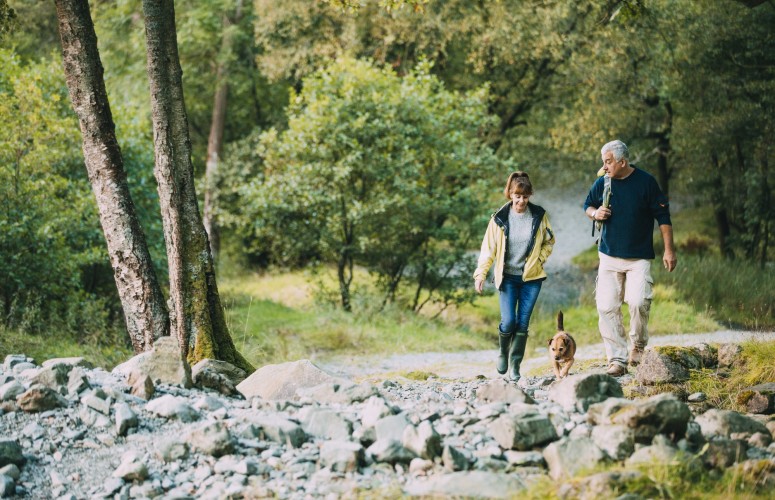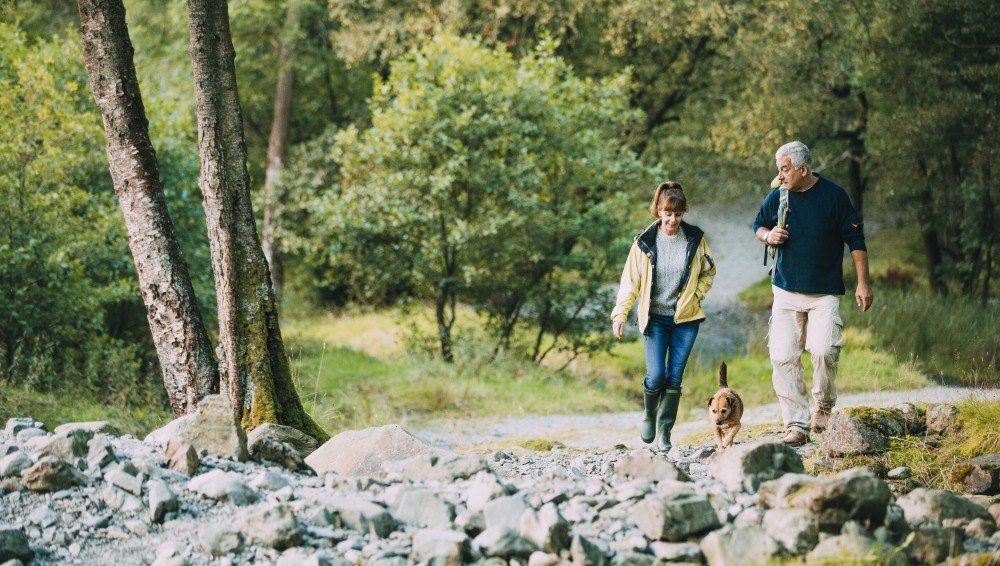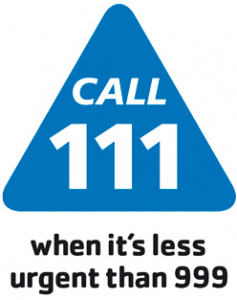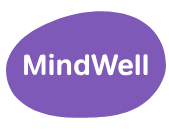Information for people with long term lung conditions to assist in the management of breathing symptoms.
Breathing control
- Helps you to get your breath back after or during activity
- Encourages a more “normal” breathing pattern
- Uses gentle “relaxed” breathing using the lower part of your chest, with relaxation of the upper chest and shoulders
- You shouldn’t feel like you are working at breathing
How to do it…
- Settle yourself into a comfortable position
- Rest one hand on your lower rib cage and the other one on your lap
- Relax your shoulders and upper chest
- Concentrate on letting your chest move under your hand
- Feel your hand rise and fall with your chest as you breathe in and out
- Think about your breath in coming in through your head and breathing out through your feet
- Breathe at your own rate
- Continue until your breathing is back under control
- Once you are happy about doing this, try resting both hands (palm up) on your lap
Positioning
Here are some different positions to use with breathing control. Try them all to find out which one works best for you.
- Sit on a chair and lean forward with both of your arms resting on your thighs, relax your wrists
- Sit upright on a chair with both hands resting on your lap – palms upright
- Stand leaning forward with your arms resting on a ledge or window sill
- Lean back against a wall or closed door with your shoulders relaxed and arms resting down by your side. Place your feet about 12 inches away from the wall and slightly apart
Active Cycle of Breathing Technique (ACBT)
There are 3 components:
- Breathing control (relaxed breathing)
- Deep breathing
- Huffing
It can be done in sitting or lying.
May need to stay in position for 10 minutes before changing.
1. Breathing control
Already mentioned on previous page
2. Deep breathing
- Expands the chest as far as possible
- Allows air to move behind trapped sputum and loosen it to be coughed out
How to do it…
- Take a slow, relaxed deep breath in, as far as you can
- Hold your breath for 3 seconds (if you can)
- Followed by a relaxed breath out
- Repeat 3 times
3. Huffing
- “Pushes” the air out
- Encourages the sputum up through the airways until it can be cleared out
- If the huff is too short, it can be ineffective
- If it’s too long, it can lead to bouts of coughing
How to do it…
- Take a normal breath in
- Keep your mouth open and “huff” the air out (like steaming up a mirror)
- Repeat 1-2 times
- Do breathing control between huffs if you feel wheezy
- When the secretions reach the bigger airways, cough the sputum out
ACBT quick guide
- Breathing control
- 3 deep breaths and hold
- Breathing control
- 3 deep breaths and hold
- Breathing control
- 1-2 huffs
- Cough if required
- Repeat as necessary
Autogenic drainage
- Uses breathing out as far as possible to loosen sputum in the small airways
- It is then moved to the larger more central airways making it easier to cough up
- Choose a comfortable, well supported position:
- Sitting upright
- Lying down with pillows
How to do it…
- Breathe in slowly, using your lower chest (as in breathing control)
- Hold your breath for 3 seconds, allowing air to evenly fill your lungs
- Push your breath out for as long as you can, keep going right to the end
- Take a slow relaxed breath in – don’t take a big breath or expand your chest as much
- Breathe out all the way again, pushing all the air out of your chest completely
- Repeat the cycle, breathe in and out slowly to avoid pushing the sputum back
- Continue until you hear or feel the sputum collecting or you feel the urge to cough
- When you need to cough, first have a “huff” and then cough
Pursed lip breathing
- It is breathing out through half-opened lips
- Some people do this naturally when breathless
- It helps with breathing out
- It reduces breathing rate and breathlessness
- It improves oxygen saturation and tidal volumes
- Some people find it beneficial and others don’t
Chest clearance
- It is important to clear your chest of as much sputum as possible
- Reduces obstruction
- Improves the amount of air getting through
Breathlessness at night
- Many people suffer from breathing difficulties during the night
- It can be frightening
- It can increase anxiety (which makes breathlessness worse)
If you wake up breathless, try:
- Sitting up over the edge of the bed, leaning forward
- Keep a fan by your bed and have it blowing on your face
- Keep your inhalers close by – take your reliever
- Use breathing techniques and positioning
- DO NOT fight your breathlessness. Relax – tensing muscles uses more energy making you more breathless




